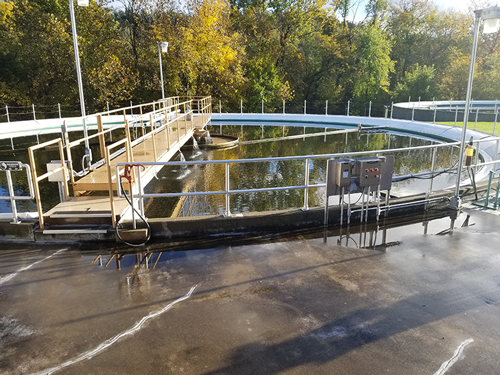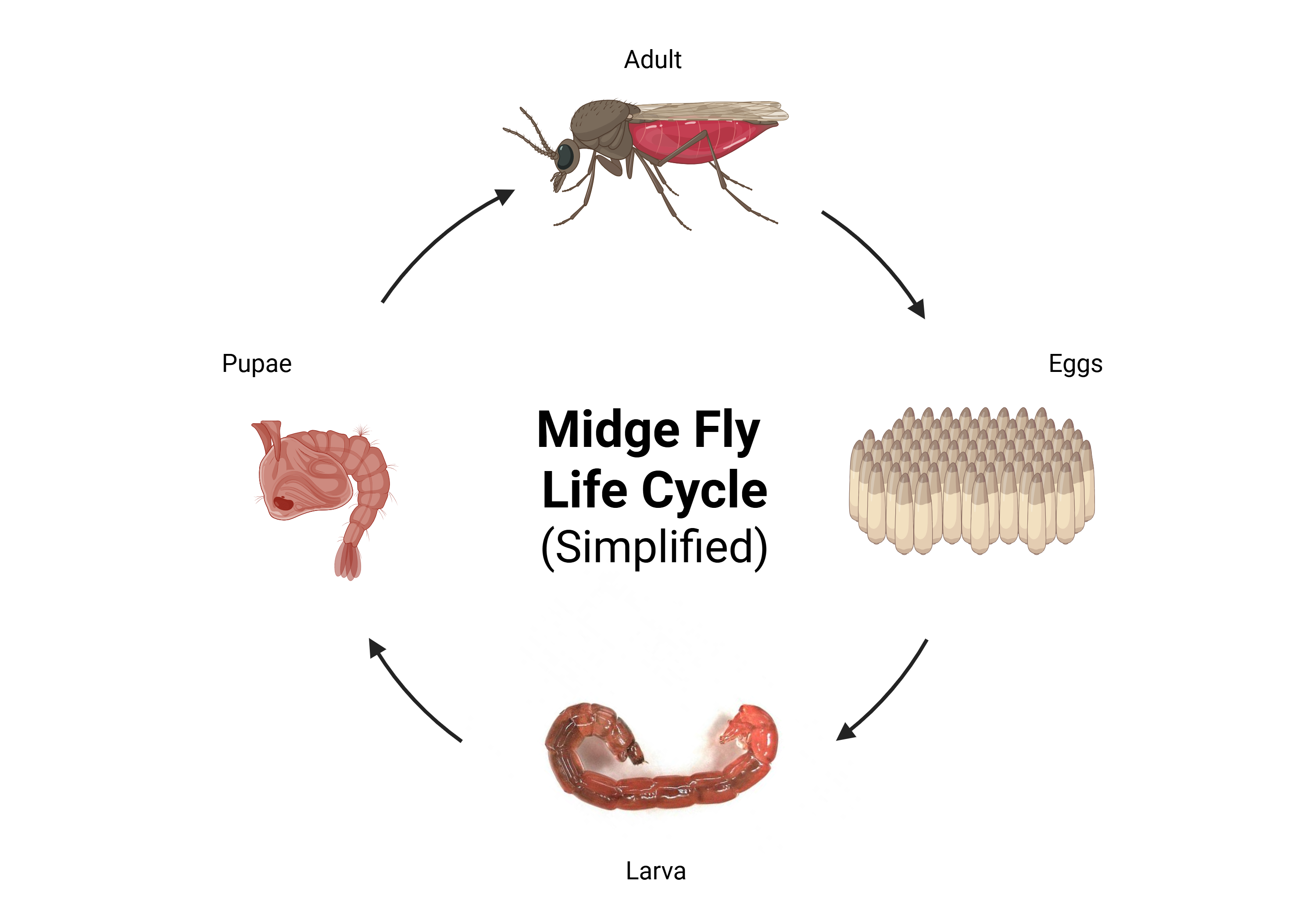Midge Flies: A Wastewater Menace
From larvae to full-blown swarm, here’s how these pests thrive—and how to stop them in their tracks.

What are Midge Flies?
The term midge flies or midges, refers to several species of tiny non biting flies. These mosquito like insects are often seen swarming around wastewater treatment plants and sewage lagoons because it is an ideal environment for their larvae, often called red worms or blood worms to grow. The red worms cling to solids and form cocoon like structures to protect themselves while feeding off sludge, bacteria floc, and nitrifying bacteria in the wastewater system.
Where are Midge Flies found?
In activated sludge plants, midge flies often swarm in filter buildings, covered clarifiers or other enclosed areas. The red worms are often found throughout the treatment process, but tend to prefer clarifiers and aeration basins. In lagoon systems, midges swarm all around the air and can be seen floating on the surface of the water or in pump houses. The red worm larvae thrive in the sludge at the bottom of the sewage lagoons. Older lagoon systems with significant sludge buildup are an ideal environment for midge fly larvae.

Why are Midge Flies a problem?
Midge flies and their larvae are both problematic for wastewater treatment plants and sewage lagoons. They create dense swarms that can be dangerous for local residents and plant operators. Midge flies swarms have been known to cause vision problems, respiratory issues, and even allergic reactions. While, an infestation of red worms can cause settling issues, foaming, congestion in pumps, and many other operational problems.
What is the Midge Fly life cycle?
Midge flies have four stages to their ten-day life cycle. Stage one is the egg mass. Stage two is the red worm larvae. Stage three is the pupa which hatches into the adult midge (stage four).

Created in https://BioRender.com
How to teat Midge Flies?
Treating midge flies and red worms in wastewater treatment plants and sewage lagoons is easy using Midge Fly Complete. AQUABACxt is a highly effective, US EPA-registered biological larvicide containing a species of bacteria called bacillus thuringiensis (BT), approved for controlling red worms and midge flies in wastewater treatment plants. To work, AQUABACxt must be able to reach the red worms, this is where Lar-V-Zyme comes in to play.
Lar-V-Zyme is a biocatalyst that specializes in dissolving tough forms of undigested BOD. This undigested bod is the main structure for red worm cocoons. Lar-V-Zyme helps degrade these cocoons exposing more red worms to the AQUABACxt treatment. This simple trick can increase the effectiveness of AQUABACxt dramatically.
Real Life Appliation
We visited the Columbus Wisconsin Wastewater Facility where we showcased our Midge Fly Complete treatment. The treatment is comprised of two parts, AQUABACxt and Lar-V-Zyme. The two work in tandem to tackle any size Midge Fly outbreak. Midge Flies are not only a nuisance but the larvae, also known as red worms, can clog valves and piping, block instrumentation, and in severe cases consume plant mix liquor.
